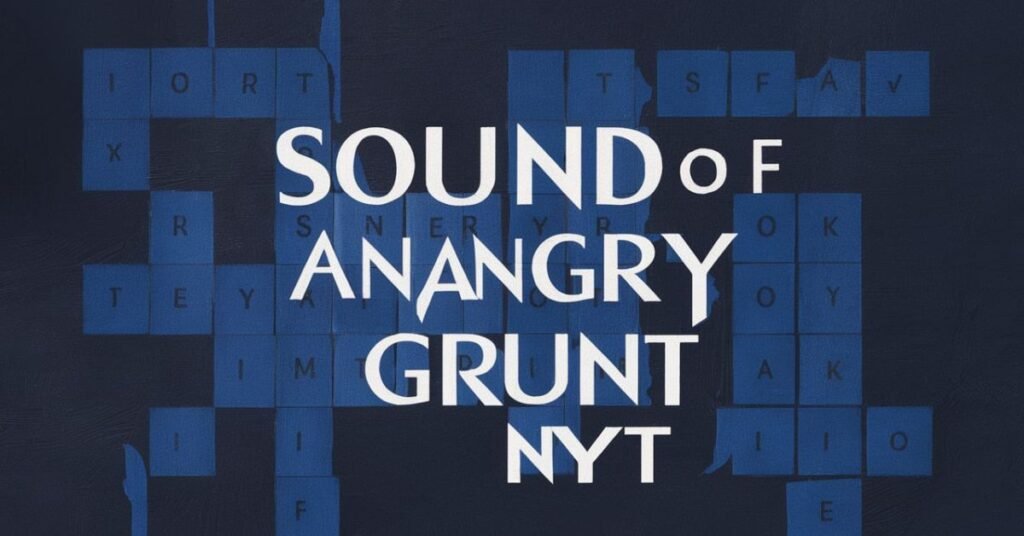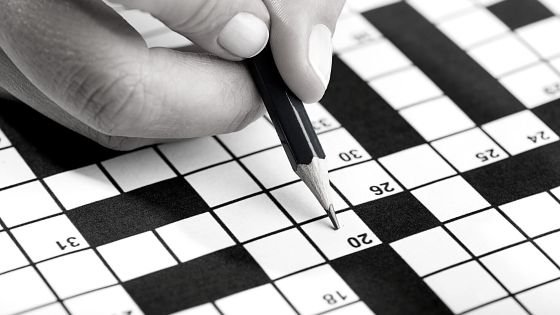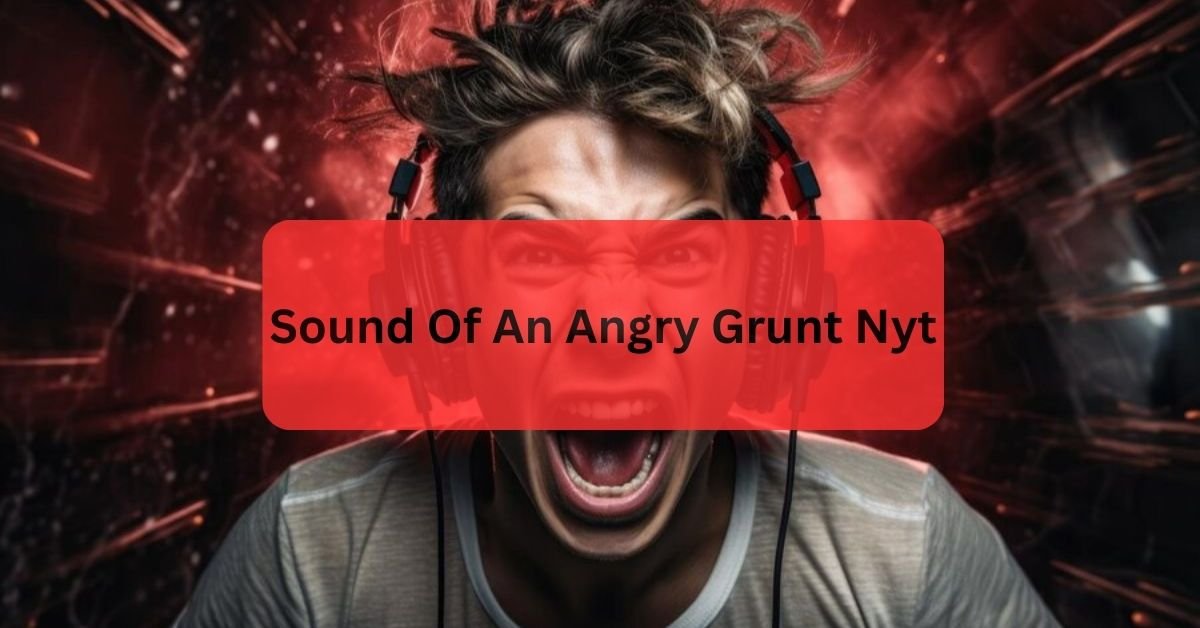I remember the first time I encountered the crossword clue “sound of an angry grunt” in the NYT. It stumped me at first, but solving it felt incredibly satisfying.
The “sound of an angry grunt NYT” crossword clue typically refers to common vocal expressions like “GRR” or “ARGH,” which mimic the sounds made when someone is frustrated or angry.
In this article, we will talk about the “sound of an angry grunt NYT” crossword clue. We’ll explore its meanings, provide decoding strategies, and discuss its relevance in crossword puzzles.
What does the clue “sound of an angry grunt” signify in crosswords?
The clue “sound of an angry grunt” in crosswords typically signifies common vocal expressions of frustration or anger, such as “GRR” or “ARGH.”
These sounds are phonetic representations of emotional responses, often used to add a layer of complexity and engagement to the puzzle.
By incorporating such clues, crossword creators challenge solvers to think beyond literal meanings and consider the auditory and emotional aspects of language.
Decoding these clues requires an understanding of human expressions and their phonetic representations.
Crossword enthusiasts often find these clues intriguing because they evoke a visceral reaction and engage different parts of the brain compared to more straightforward, definition-based clues.
Why are auditory clues like “sound of an angry grunt” used in crosswords?

Auditory clues like “sound of an angry grunt” are used in crosswords to add a unique challenge and enhance the solver’s experience.
These clues engage solvers by requiring them to consider sounds and emotional expressions, rather than just words and definitions. This approach taps into a different cognitive process, making the puzzle more dynamic and multifaceted.
Additionally, such clues can evoke emotional responses, making the puzzle more engaging and memorable.
By integrating auditory and emotional elements, crossword creators can craft more creative and diverse puzzles, appealing to a broader range of solvers and maintaining interest and excitement in the solving process.
How can solvers improve their ability to decode complex clues like “sound of an angry grunt”?
Solvers can improve their ability to decode complex clues like “sound of an angry grunt” by regularly practicing and exposing themselves to a wide variety of crossword puzzles. Familiarity with common phonetic matches and expressions of emotion is key.
Engaging with different types of puzzles and studying past clues can also help build a robust mental database of potential answers.
Another effective strategy is to broaden one’s cultural and linguistic knowledge. Understanding slang, idioms, and colloquial expressions from different regions and time periods can provide valuable context for decoding tricky clues.
Additionally, discussing puzzles with fellow enthusiasts and learning from their insights can further enhance one’s solving skills.
What strategies are effective for solving auditory crossword clues?

Effective strategies for solving auditory crossword clues include focusing on the phonetic sound of the clue and considering common expressions or sounds associated with the given emotion or action.
For example, when encountering a clue like “sound of an angry grunt,” solvers should think about what sounds people typically make when they are frustrated or angry.
Additionally, solvers should look for contextual hints within the puzzle. The surrounding clues and the overall theme of the crossword can provide valuable context that narrows down the possible answers.
Practicing auditory puzzles and familiarizing oneself with common auditory clues will also improve one’s ability to solve these types of challenges.
Read: What Is Fit In Travel? – Unleash Your Adventure In 2024!
What role do cultural and linguistic factors play in decoding crossword clues?
Cultural and linguistic factors play a significant role in decoding crossword clues, as many clues rely on idiomatic expressions, slang, and culturally specific references.
Understanding these elements can provide crucial context and insight, making it easier to decipher tricky clues. For instance, an angry grunt sound may vary in representation across different cultures and languages.
Exposure to a wide range of cultural references, from literature and movies to everyday speech patterns, can greatly enhance a solver’s ability to interpret clues.
Additionally, being aware of regional differences in language use and expressions can help solvers navigate the diverse landscape of crossword puzzles, leading to more successful and enjoyable solving experiences.
How do crossword creators use emotional and auditory elements to enhance puzzles?
Crossword creators use emotional and auditory elements to add depth and engagement to their puzzles.
By incorporating clues that evoke emotions or sounds, they challenge solvers to think beyond the literal meanings of words and engage with the puzzle on a more intuitive level. This approach makes solving more dynamic and interactive.
Emotional and auditory clues also add variety and creativity to puzzles. They break the monotony of standard definition-based clues, providing solvers with a fresh and exciting challenge.
These elements can make puzzles more memorable and enjoyable, fostering a deeper connection between the solver and the puzzle.
What impact do complex clues like “sound of an angry grunt” have on puzzle design?

Complex clues like “sound of an angry grunt” have a significant impact on puzzle design, encouraging creators to be more inventive and diverse in their clue construction.
These clues require solvers to engage with the puzzle on multiple levels, combining linguistic, phonetic, and emotional knowledge. This multidimensional approach enhances the overall solving experience.
By incorporating such clues, puzzle designers can appeal to a broader audience and keep their puzzles fresh and challenging.
It also allows for greater creativity in clue writing, pushing the boundaries of traditional crossword design and contributing to the evolution of the puzzle genre.
What are some common expressions used for auditory clues in crosswords?
- GRR: Represents frustration or anger, mimicking the growling sound often made in these emotions.
- ARGH: An expression of annoyance or exasperation, frequently used in reaction to frustration.
- AHA: Indicates a moment of realization or discovery, often used to signify a breakthrough.
- OUCH: Conveys pain or discomfort, replicating the sound made when someone is hurt.
- YAY: Expresses joy or celebration, capturing the sound of excitement and happiness.
Read: Who Owns Exoticca Travel? – Company’s Ownership Structure!
FAQs:
What is a common strategy for solving “sound of an angry grunt” clues?
Focus on phonetic representations of emotions and consider familiar sounds that convey anger or frustration.
Are “sound of an angry grunt” clues unique to NYT crosswords?
No, these types of auditory clues are used in various crossword puzzles to add diversity and challenge.
How do auditory clues like “sound of an angry grunt” enhance crossword puzzles?
They engage solvers by incorporating emotional and auditory dimensions, making the puzzles more dynamic and interesting.
Conclusion:
The crossword clue “sound of an angry grunt NYT” usually refers to typical vocal sounds like “GRR” or “ARGH,” which imitate the noises people make when they are frustrated or angry.
Read:




